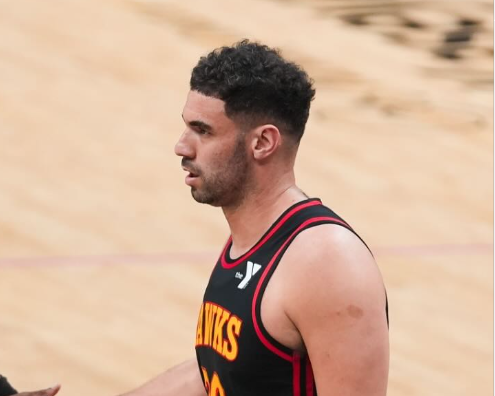The philosophy behind Georges Niang’s salary, rather than just the financial figures, makes it stand out in the increasingly analytics-driven world of contemporary basketball. With a three-year contract worth $25.5 million, Niang makes an impressive $8.5 million a year, which is especially commensurate with his reliability, fortitude, and innate basketball acumen.
Niang, who was selected 50th overall in 2016, was never a standout player. However, his endurance more than made up for his lack of flash. From playing infrequently for Indiana to becoming a mainstay in the rotation for Utah and Philadelphia, Niang’s career has been marked by exceptional efficacy and consistent output. His perimeter shooting, team defense, and court awareness have all greatly improved over the last nine seasons, making him an invaluable member of any bench he has anchored.
| Name | Georges Niang |
|---|---|
| Date of Birth | June 17, 1993 |
| Age | 32 |
| Birthplace | Lawrence, Massachusetts, USA |
| Height | 6 ft 7 in (2.01 m) |
| Weight | 230 lb (104 kg) |
| Position | Power Forward / Small Forward |
| College | Iowa State University |
| NBA Draft | 2016 (Round 2, Pick 50) |
| Current Team | Cleveland Cavaliers |
| Contract Duration | 3 Years (2023–2026) |
| Total Contract Value | $25,500,000 |
| Average Annual Salary | $8,500,000 |
| 2025–26 Base Salary | $8,200,000 |
| Career NBA Earnings | $29,685,084 |
| @georgesniang | |
| Agent | Thad Foucher (Wasserman) |
| Nickname | The Minivan |
| Reference |
By 2025, Niang’s pay plan will be a particularly creative illustration of what mid-tier dependability looks like from a financial standpoint. He is guaranteed a base salary of $8.2 million for the 2025–2026 season. In addition to protecting the player, this conveys to the league his worth in roster-building talks. In contrast, his total career earnings now surpass $29 million, which he earned via reliable, consistent delivery rather than fame.
Niang has obtained contracts that demonstrate his leadership skills in the locker room and his ability to shoot strategically through strategic alliances, most notably with agent Thad Foucher. He established himself as a surprisingly inexpensive mainstay of the second unit while playing for Utah, constantly stretching defenses and making clutch three-pointers. Bigger opportunities arose during that stretch, and his role had significantly grown by the time he got to Cleveland.
Niang gives coaches a very effective floor-spacing option that doesn’t interfere with defensive schemes by utilizing his spot-up shooting ability. Players like Niang provide a remarkable balance: low maintenance, high value, especially in recent seasons when team-building has largely depended on cap flexibility. Although his pay may not garner as much attention as a supermax deal, it does highlight a larger league trend that values basketball intelligence just as highly as athleticism.
Niang’s contract can be considered a model in the field of role-player economics. NBA teams have begun to prioritize veteran consistency over paying erratic upside. Niang, who is very effective, very clear in his role, and extremely versatile across offensive sets, fits that description. He can play either forward position due to his 6-foot-7 and 230-pound frame, which allows him to guard several positions while maintaining his floor balance.
Fans find that Niang’s story adds a realistic perspective to a league that is frequently dominated by narrative hype. Known lovingly as “The Minivan,” he lives up to the moniker—sharing humorous Instagram stories, doing unguarded interviews, and exhibiting a particularly refreshing self-awareness. He frequently has the most captivating voice in the room during media day appearances, incorporating humor into incisive remarks and expressing his pride in dispelling skeptics.
The NBA’s economics have changed in the last ten years. Front offices’ willingness to take financial risks has been greatly curbed by the emergence of super teams, luxury tax penalties, and new CBA restrictions. Georges Niang’s $8.5 million salary is not only reasonable in this changing environment, but especially advantageous. His function makes it possible for players to take a break, for bench units to remain competitive, and for playoff rotations to feel safe. He provides big-moment readiness without requiring complete control of the ball.
As part of their long-term roster strategy, Cleveland made the strategic choice to lock down Niang during the 2023 offseason. With up-and-coming players like Darius Garland and Evan Mobley, the Cavaliers needed seasoned voices with postseason expertise. Niang was a very sensible choice because he had previously contributed significant playoff minutes for the Sixers and Jazz.
Niang has established trust among teammates and in coaching circles by fitting in with any system he joins. His volatility as a roster asset has consequently been greatly decreased. In a profession where injuries, rotations, and matchups change virtually every week, it’s an underappreciated but crucial quality.
Instead of winning a game in 2024, Niang made headlines for a behind-the-scenes documentary moment with Cleveland rookies in which he humorously—but honestly—described what it takes to survive in the league. His message was especially clear: be prepared, know your role, show up, and make your shots.
In a game where defensive switches and three-point percentages are becoming more and more important, Niang’s style of play is still well suited for contemporary contests. His effort has significantly increased since his rookie days, and he releases quickly and positions himself instinctively. His minutes are earned, not handed, each year. In the cap-constrained NBA of today, that professionalism is invaluable.
Even though Georges Niang does not currently have an All-Star designation next to his name, his pay stub indicates otherwise. With a career path driven by self-awareness, flexibility, and sheer hard work, he embodies the ideal financial balance that NBA executives seek: not too loud, not too risky, just incredibly dependable.


